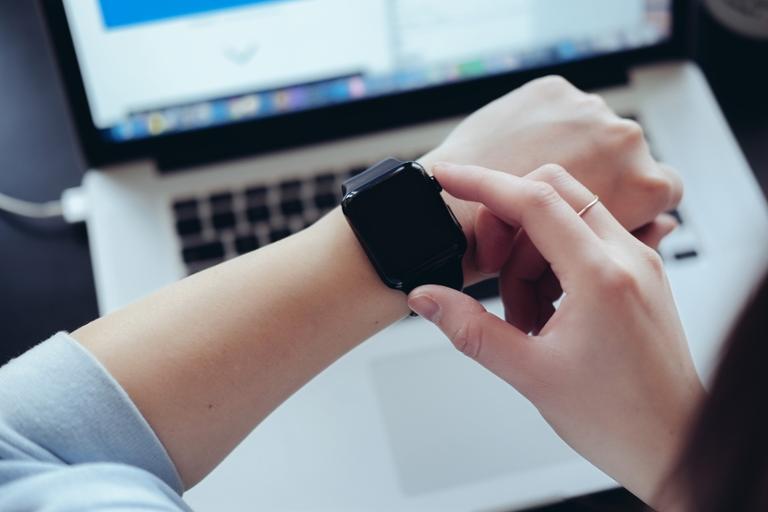At the outset of the pandemic, when it came to contact-tracing in the hospitality industry, some cruise companies needed more sophisticated contact-tracing solutions. So, wearable technologies were introduced as an advance over mobile apps. Thanks to the more sophisticated technology used in wearables, cruise ships were able to monitor COVID-19 outbreaks much better. Ship officials issued notifications to guests who had contact with an infected individual, allowing them to isolate themselves in their rooms without the entire ship being placed on lockdown.
COVID-19 lockdowns are still commonplace, and surges will no doubt keep occurring. Authorities in China, for example, have sought to minimize disruptions while sticking to the country’s zero-Covid strategy, imposing targeted lockdowns when cases emerge. However, the daily case numbers are rising in China’s financial hub of Shanghai—home to 24 million people—prompting concern among residents, and their first citywide lockdown has just been announced.
We are now moving to a place where contact tracing technology is changing course towards even more sophisticated wearable technology. The hospitality industry can utilize wearable technology with the added bonuses of equipment tracking, monitoring, and better coverage. Let’s analyze these new functions of wearable technology in more detail and how they can further digitize the hospitality industry and other sectors.
Wearable Tech: Medical Applications
Wearable smart gadgets have been widely employed during the pandemic to improve symptom monitoring, social distancing rules, and quarantine compliance. Their usefulness stems primarily from the fact that they are practical, passive, and capable of continuous monitoring with minimum human involvement. Second, they are simple to deploy and use in in-patient or distant settings, allowing for a non-invasive examination of patients. Finally, wearables can provide objective measures of physiological indicators that can be linked to practical wireless network systems and used as a platform for real-time feedback to patients and doctors.
Furthermore, there is a new wearable technology designed for residents in senior living communities that merges patient activity and nurse call data with electronic medical records. With an integrated system in place, care teams can look for trends in a resident’s status and customize treatment plans.
The use of wearable sensors and location-based tracking technologies to obtain real-time medical data and provide health services could have significant implications for the hospitality sector, too. In hospitality, the functions of wearable devices are not as easily definable, leaving hotels and cruise ships, for example, scope to apply wearable technology in more creative ways.
Equipment Tracking and Location Services
Thanks to the use of a mesh network, where devices (or nodes) are linked together and branch off one another, cruise ships are able to collect sensor data about items in near-real-time wherever the network is deployed. The mesh network can also be used to collect data from portable generators, fuel storage, vehicle maintenance and usage data, and other major assets. Furthermore, newer equipment is equipped with BLE smartphone interfaces to collect status and sensor data, typically using a proprietary app.
Applying this in another hospitality context, hotels could use these devices to tailor guests' experiences better. Perhaps if a hotel monitors air quality for COVID-19 and notices it is diminishing in a particular area of the hotel, this could be flagged on a guest’s wearable, indicating they should move to a different zone. Sensor technology could even be used to detect air quality directly from the wearable device. In the event of an emergency, alerts and, if needed, instructions can also be sent over the mesh network. An example would be a fire alert with an instruction to avoid a certain space or area.
Additionally, inexpensive mesh gateways can be connected to any TCP/IP port or Wi-Fi access point with global connectivity. Continuous visibility is enabled for all mesh-tagged personnel and equipment in the most austere locations. This could be really suitable for a shore excursion. A mesh device in a belt clip package could provide continuous passenger accountability to tour guides using a regular smartphone for local visibility even when global connectivity is not available. The guide’s cell phone would have an alerting capability so the tour guide would know who has wandered off too far.
Future Possibilities and Challenges of Wearable Tech
Using GPS data and Bluetooth to determine the presence of a COVID-19 contact, other health parameters, and hospitality applications does not come without its own controversies. Some critics of wearable tech argue that they set a dangerous precedent, citing it as an example of how authorities and businesses have raced to collect sensitive personal data without enough protections in place, under the guise of fighting something like Covid-19. This is why it’s crucial that organizations are both transparent with their data policies and abide by data regulations.
In terms of other possible applications of wearables that could come into play soon, targeted electronic pulses to specific areas of the brain is a fascinating idea. This technology is called brain-computer-interface (BCI) and could lead to scenarios only previously imagined in science fiction novels. For example, imagine being able to communicate telepathically with loved ones or even being able to play back dreams or memories. We have seen the early stages of this technology with Elon Musk’s Neuralink company, but it is far from being widely adopted. Still, the continued application of wearable technology in the hospitality industry suggests that new frontiers are ready and waiting to be explored.
By Nicholas Kyriakides, Co-Founder and COO of netTALK CONNECT, and netTALK MARITIME.



